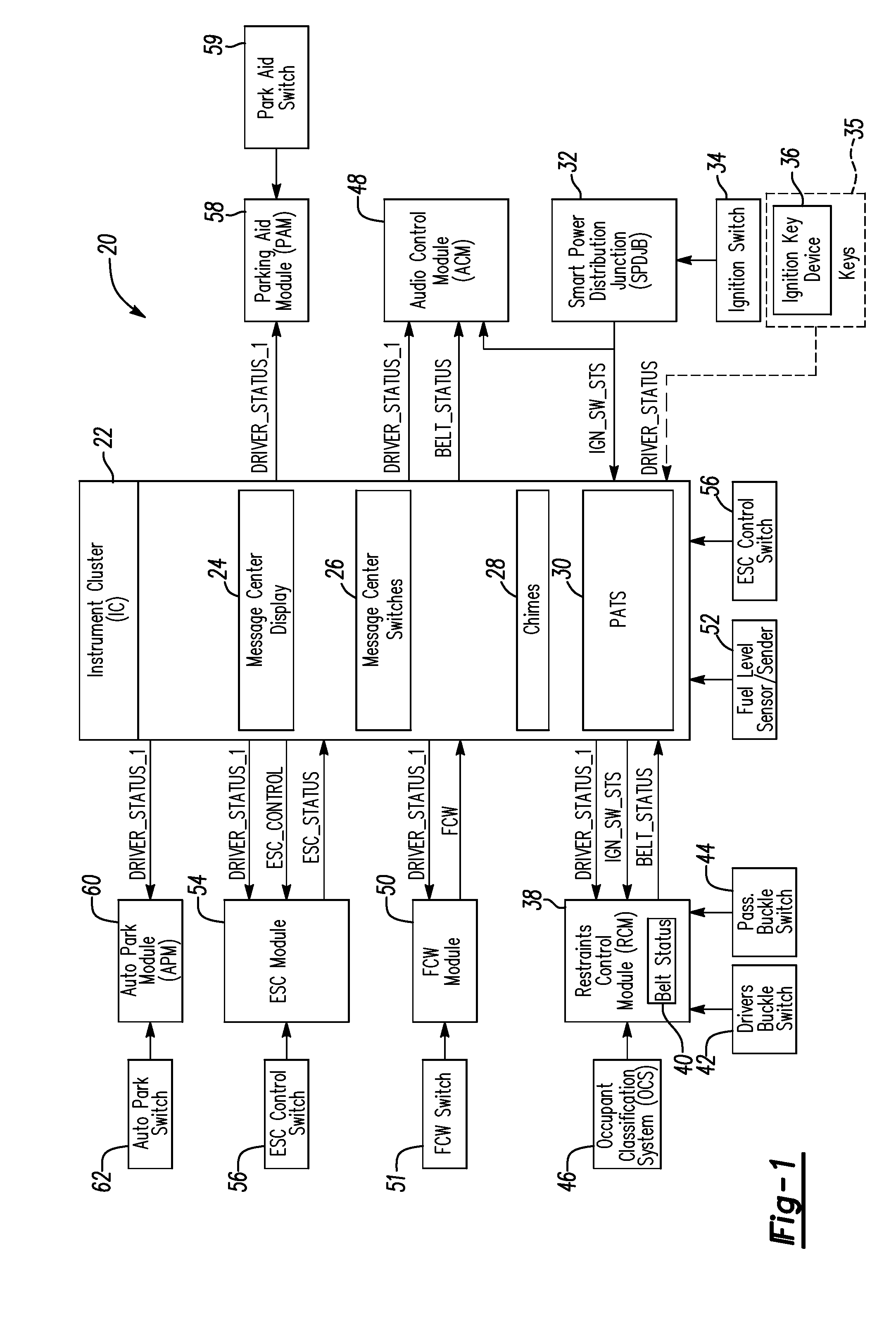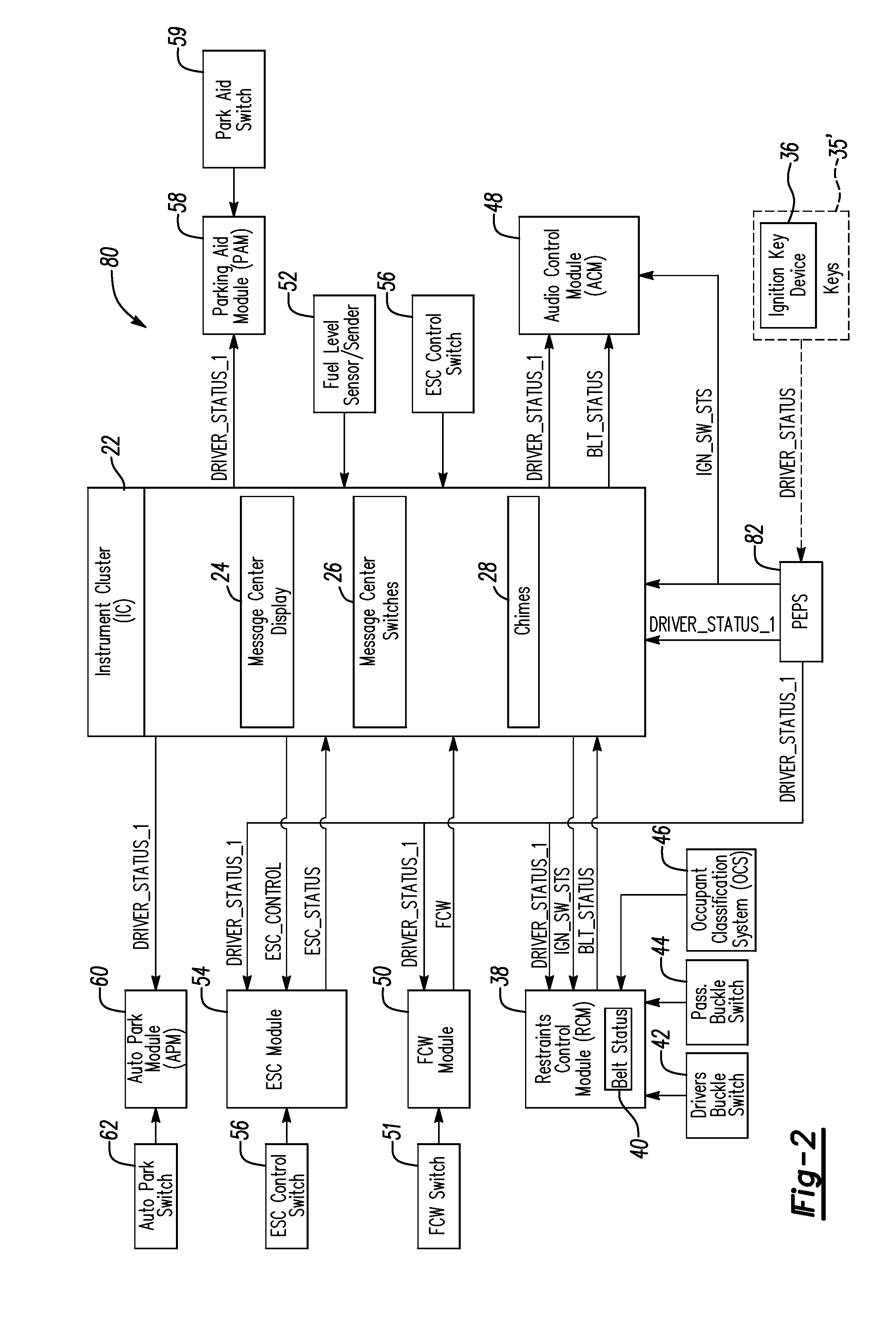System and method for controlling a safety restraint status based on driver status
a technology of safety restraint and driver status, which is applied in the direction of pedestrian/occupant safety arrangement, anti-theft devices, instruments, etc., can solve the problems of not being able to guarantee that the teenager may keep the safety and notification features enabled, and parents may not wish to have the various safety and notification related features disabled
- Summary
- Abstract
- Description
- Claims
- Application Information
AI Technical Summary
Benefits of technology
Problems solved by technology
Method used
Image
Examples
Embodiment Construction
[0020]The embodiments of the present invention generally provides for a driver identification functional operation whereby primary and secondary drivers are determined and various levels of control are granted to the driver based on whether the driver is the primary driver or the secondary driver. In general, the primary driver may be defined as the administrative driver who has greater control over the functionality of the various safety and / or notification features in the vehicle. The secondary driver may be defined as a restricted driver who has limited control over the safety and / or notification features generally provided by the vehicle and is to abide by the functional restrictions imposed or selected by the vehicle or the primary driver. The embodiments of the present invention provides but are not limited to inhibiting a seatbelt restraint status disable, inhibiting a forward collision warning (FCW) disable, inhibiting an electronic stability control (ESC) disable, inhibitin...
PUM
 Login to View More
Login to View More Abstract
Description
Claims
Application Information
 Login to View More
Login to View More - R&D
- Intellectual Property
- Life Sciences
- Materials
- Tech Scout
- Unparalleled Data Quality
- Higher Quality Content
- 60% Fewer Hallucinations
Browse by: Latest US Patents, China's latest patents, Technical Efficacy Thesaurus, Application Domain, Technology Topic, Popular Technical Reports.
© 2025 PatSnap. All rights reserved.Legal|Privacy policy|Modern Slavery Act Transparency Statement|Sitemap|About US| Contact US: help@patsnap.com



